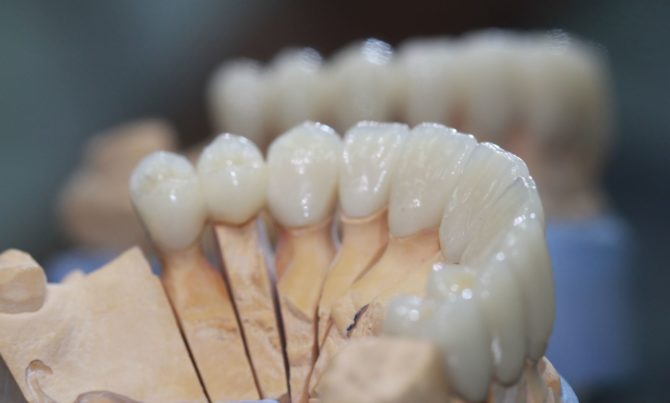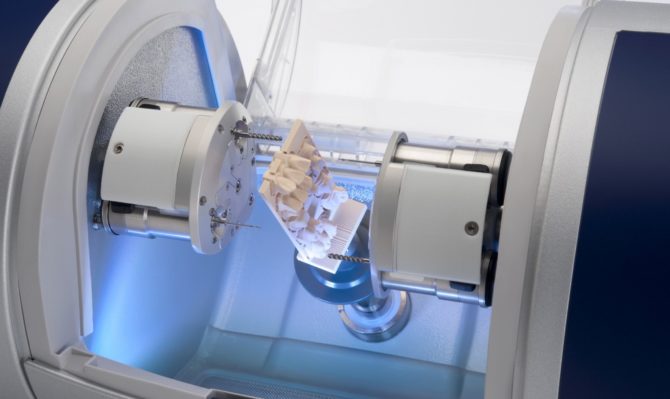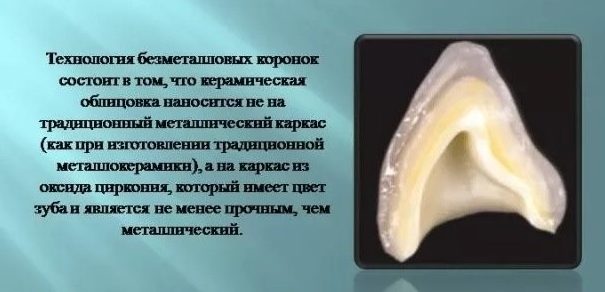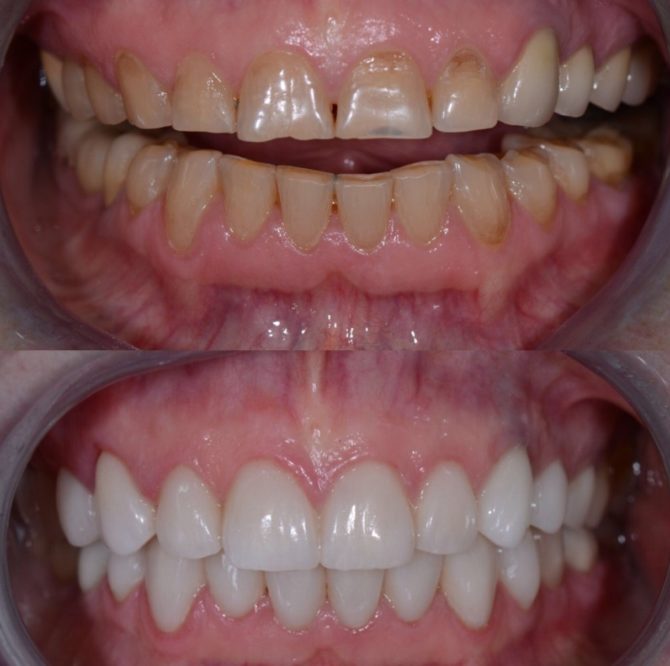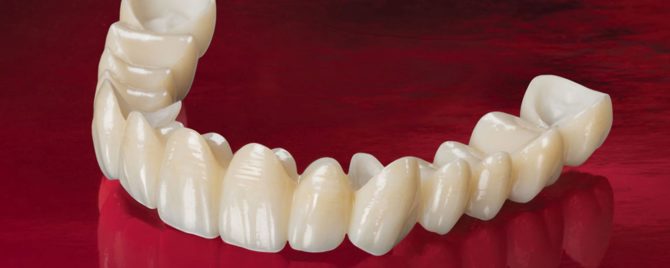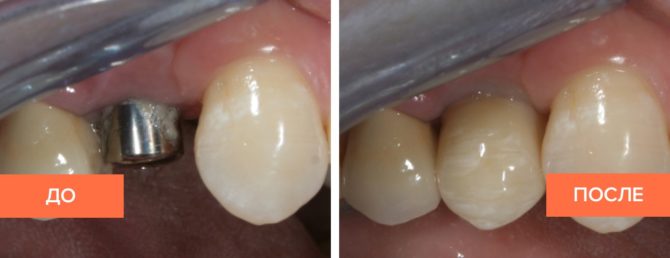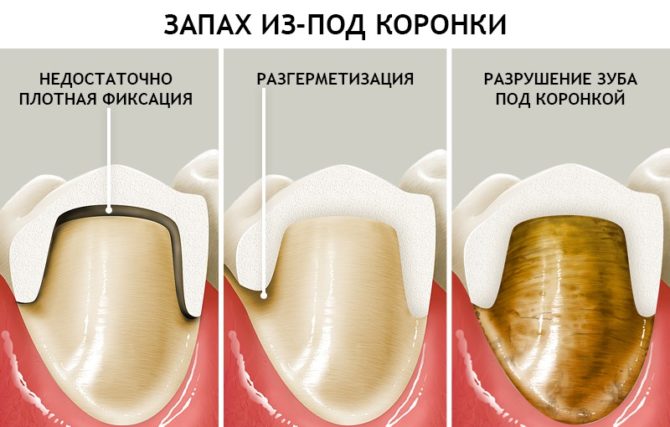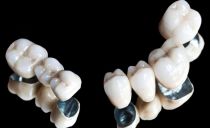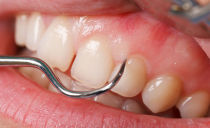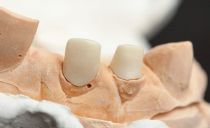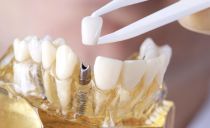Zirconium crowns: pros and cons, differences, indications for installation
When it is necessary to restore the upper part of the tooth, orthopedic constructions are used in dentistry - false microprostheses. In shape they resemble a crown, therefore they are called “crowns”. For their manufacture, different materials are used. But the most popular is zirconium oxide. Highly often zirconium crowns are placed on the front teeth, since they look natural and beautiful.
Content
Pros and cons of zirconia crowns
Zirconium has been in the arsenal of dentists for many years. During this time, he established himself as reliable, abrasion resistant and durable materialwith which you can create the most complex designs.
The advantages of zirconium include:
- security;
- high strength;
- the ability to use them for the reconstruction of chewing teeth;
- ease;
- resistance to the destructive effects of acids and alkalis.
There is not a single case recorded by doctors when crowns made of zirconium oxide would cause an allergic reaction.
An important plus is the manufacture of a crown on a tooth without human intervention. Modern technology is able to independently perform all operations according to specified parameters. This eliminates the human factor, makes fit errors impossible.
Despite the perfection of the technology, zirconia crowns have both pros and cons. The latter include the above list of contraindications and high cost: from 20 thousand rubles. apiece when installed on a tooth and from 40 thousand p. when installed on an implant.
The price is affected by the need for high-quality raw materials and high-tech equipment. Both are expensive. Plus, the work of a doctor who has undergone specialized training. Therefore, the cost of installing a crown even on one tooth may seem high to many.
Zirconia crowns design
Zirconium tooth crowns contain two layers. The inner one is a zirconia dioxide framework. Exterior is facing ceramic.
Such products are able to refract light rays in the same way as natural tooth enamel. Therefore, crowns have natural light shades. They differ from other analogues in wall thickness: only 0.4 mm. This allows you to grind the tooth minimally during the preparation period.
An important difference between zirconia-based crowns is the possibility of installation on implants. Physical and chemical properties of the material exclude the interaction of substances.
Zirconium tooth crowns can avoid complications in the form of caries or periodontal disease, as they fit very tightly on the gums.
Comparison with cermets
Ceramic-metal products lose to zirconium in several ways:
- safety, hypoallergenicity;
- thickness: thicker metal-ceramic constructions require intensive grinding of the tooth;
- service life: 10 years for cermet, 15 - for zirconium.
Cermet crowns often cause blue staining of nearby gum sections. In this they are also inferior to zirconium analogues.
Indications for installation
First of all zirconium crowns are necessary for patients who are already faced with an allergy to other materials. In some situations, this is the only way to save teeth without harming the body. In addition, they are indispensable:
- if there are several teeth in the oral cavity affected by caries;
- in the manufacture of removable dentures;
- if you want to give the smile zone a natural look.
Zirconia crowns on the front teeth are a win-win option for those who would like to maximize the service life of the orthodontic design without sacrificing aesthetic characteristics. Any, even the thinnest zirconium crown costs at least 15 years without changing its shape and color.
Contraindications
A bridge or ceramic crown cannot be mounted on a zirconia frame
- during pregnancy, in the lactation period;
- with severe mental disorders;
- in acute inflammatory processes in the oral cavity;
- with weakened immunity;
- with bruxism (grinding of teeth);
- with a low dentition or too deep bite.
In other cases, zirconium teeth as in the photo below will be a real salvation for patients who have dental problems.
Production and installation: milestones
At the first visit, the dental technician will specify how much it will cost to manufacture and install the structure. And, if the patient is satisfied with the price, he will make a cast of the teeth. Further prosthetics will take place according to this algorithm:
- Scanning the received impression and its computer processing.
- Casting the base (frame) of zirconium dioxide.
- Design and visualization of a future tooth or bridge.
- Application of ceramic spraying.
- Fitting.
- Setting the crown.
After installing the crown, the doctor takes a special cementitious mortar and fixes the structure on the prepared teeth. During the fitting, the patient should listen to his feelings, to understand whether ceramic spraying is bothering him (if his bite has been changed), whether pain sensations arise.
If a zirconium crown is placed on a chewing tooth, it is worth paying attention to the distribution of the chewing load. If the front teeth have undergone restoration, it is necessary to evaluate their appearance.
Care for ceramic crowns based on zirconium oxide
As long as the bridges and crowns on the zirconium frame will stand, not a single structure will stand. But to save it, care is needed. Only with proper use will zirconia crowns look the same over many years.
Cleaning
Like native teeth ceramic coated zirconia crowns need thorough cleaning. It is necessary to use a high-quality paste and a medium hard brush. The disadvantage of soft brushes is that they do not completely clean out either the teeth themselves or the interdental spaces.
You need to clean the crowns as much as natural teeth: at least twice a day. Additionally, it is good to use rinses or just rinse the mouth after eating with clean water.
What spoils crowns
Many patients notice that the photos of zirconium crowns before and after several years of wearing are different: chips, cracks appear. To prevent this from happening, you should know the main risk factors:
- the habit of opening bottles with teeth;
- love of nuts, seeds;
- rare visits to the dental clinic: the doctor will notice defects sooner and help do a little repair.
Teeth should be used for their intended purpose, avoiding aggressive mechanical stress.
If the crown has fallen out
There are few reasons for the loss. It:
- atrophy of hard tissues under construction, reduction of their volume;
- pathological condition of the body (somatic disorders, diabetes), the result of which is tooth depressurization;
- wrong installation.
Due to the high competition between specialized dental clinics, improper installation is a rarity. More often the cause is the physiological characteristics of the patient and atrophy. As the sealed tooth is depulped, sooner or later it will begin to decay. Gradually, its hard tissues lose volume, and the orthopedic design cannot be supported only by cementitious mortar.
What to do
In the case of zirconium crowns, unexpected precipitation is extremely rare. More often, a person in a few weeks begins to feel discomfort, notices loosening of the structure. But if this happened, and a reliable dentist is temporarily unavailable, you can use glue for removable dentures:
- thoroughly clean the precipitated element;
- rinse and dry the tooth base;
- try on a cleaned pad, remember its correct and comfortable position;
- apply a thin layer of glue to the inside;
- put the structure in place, pressing it tightly in the direction of the gums.
 The glue will last no more than a day. During this time, you will have to find a doctor or repeat all the manipulations. The most convenient fixing creams are Korega, President, ROCS, Protefix. They have a suitable consistency, easy to apply.
The glue will last no more than a day. During this time, you will have to find a doctor or repeat all the manipulations. The most convenient fixing creams are Korega, President, ROCS, Protefix. They have a suitable consistency, easy to apply.
What not to do
For a longer fixation, there are dental cements. They are divided into two types: formulations intended for short-term retention (2-3 weeks), and long-acting drugs (more than 10 years). Both categories are represented in pharmacies and medical equipment departments. But you cannot buy and use long-acting cements on your own. Only a doctor can properly apply them.
Normal adhesive should not be considered as a fixative. Especially, having the prefix "super". This is a direct way to damage the orthopedic product and to acute poisoning of the body. The substances that make up household adhesives are toxic, can cause asphyxiation, paralysis.
Output
With proper care and good health zirconium crowns serve for many years. Their high cost is fully balanced by many advantages. Therefore, if the budget allocated for tooth restoration allows you to install structures with the best characteristics, you should use this.

